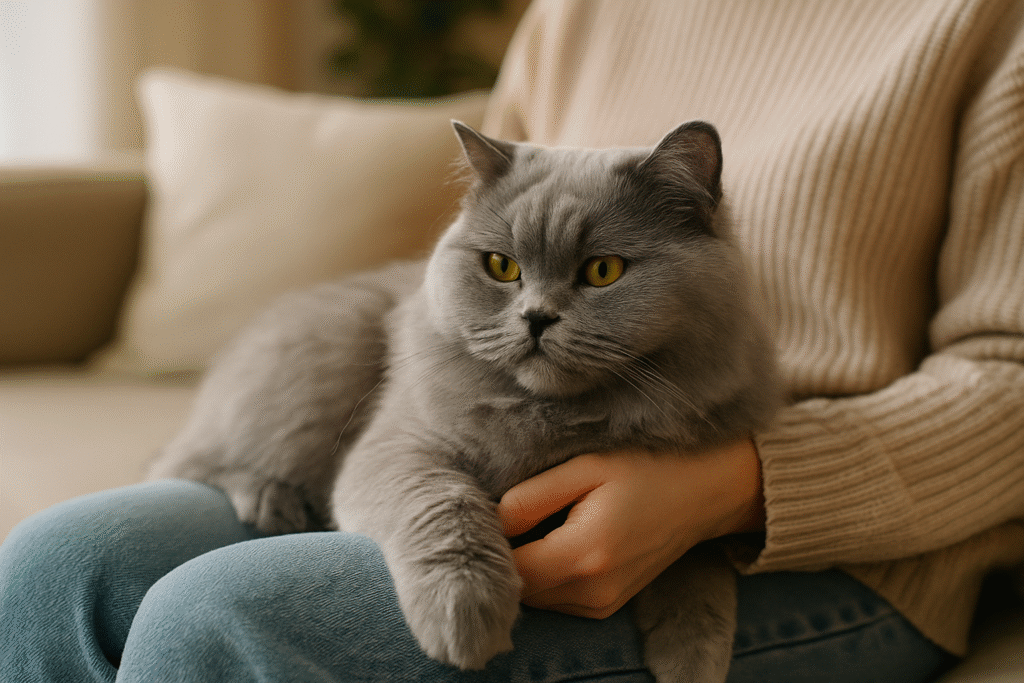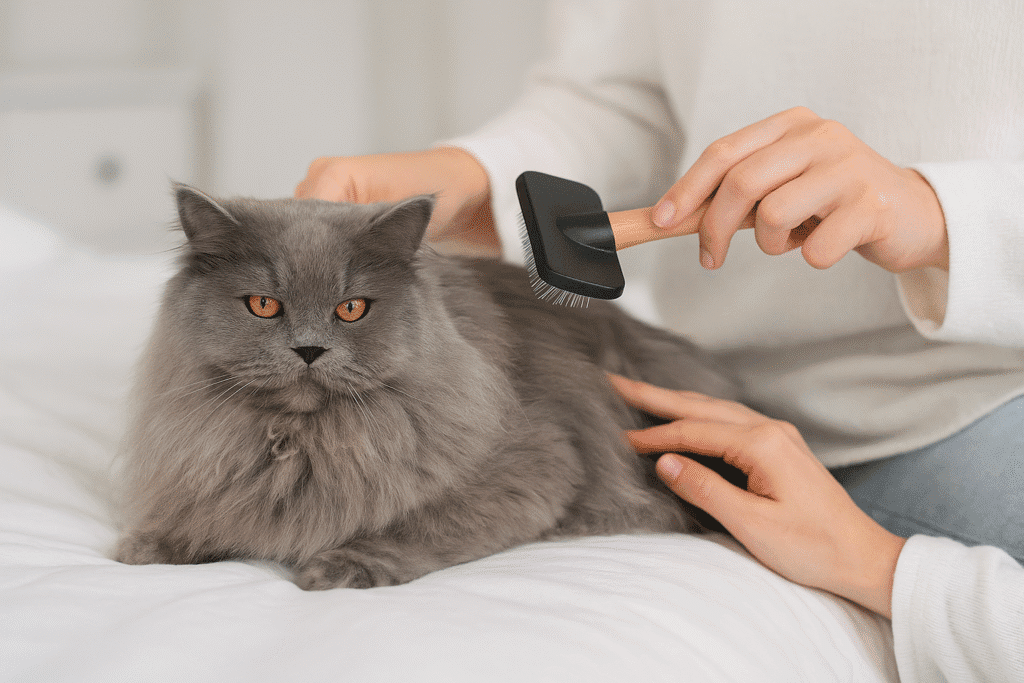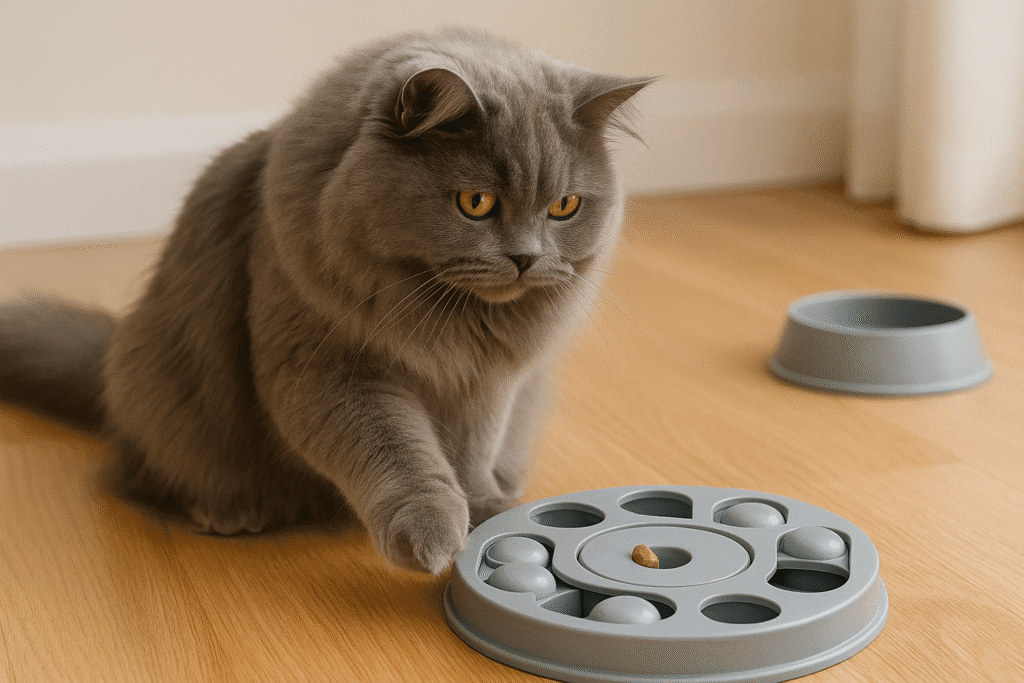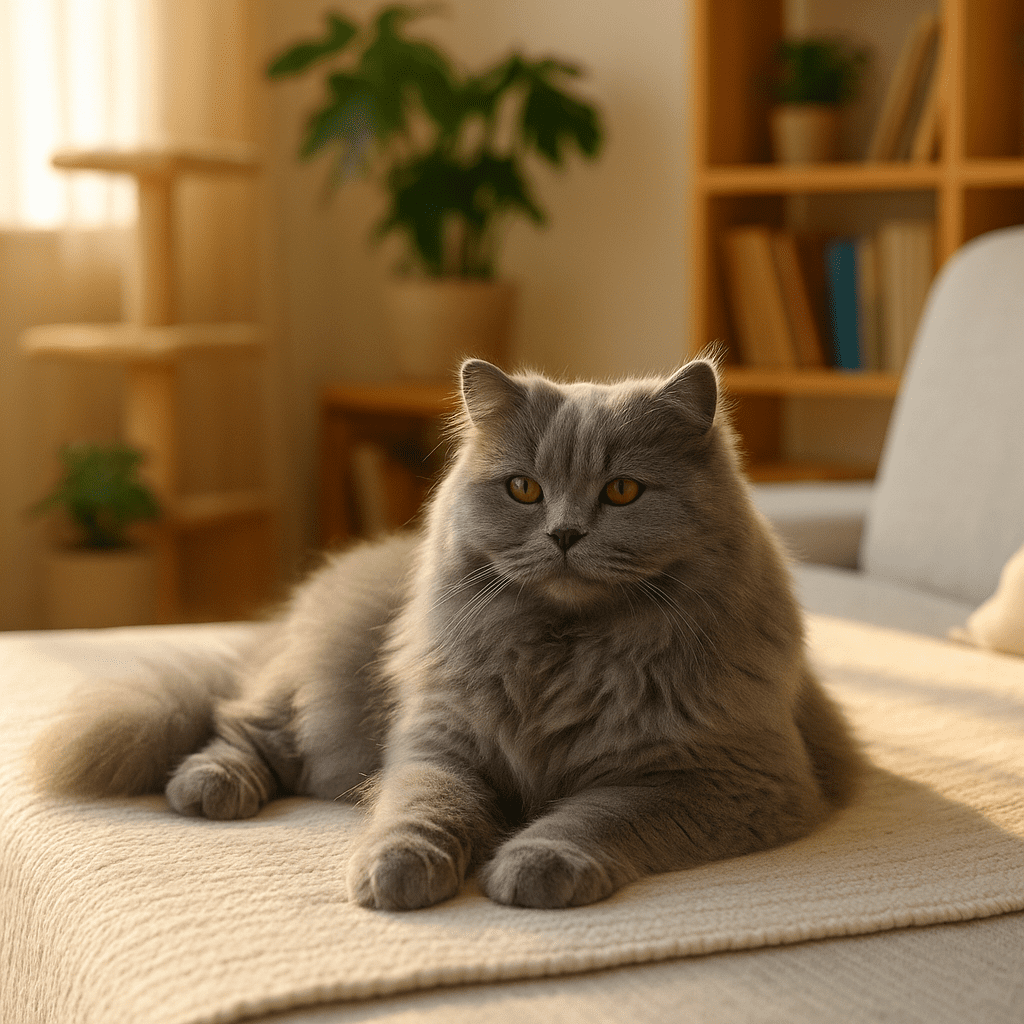British Longhair Cat: The Fluffy Royal That Loves Cuddles
Discover everything about the British Longhair Cat — a breed known for its luxurious coat, calm temperament, and affectionate nature. In this British Longhair Cat Care Guide, learn how to care for their grooming needs, manage their health, and nurture their sweet, royal personality.
Introduction: Meet the British Longhair Cat
The British Longhair Cat combines the best of British charm and Persian elegance. With its plush coat, round face, and gentle temperament, this breed is often described as “a royal companion wrapped in fur.” Originally developed by crossing the British Shorthair and the Persian Cat, the British Longhair embodies balance — affectionate but independent, playful yet serene. If you adore a cuddly feline that enjoys peaceful moments by your side, this breed will melt your heart.

British Longhair Personality: Calm, Affectionate, and Dignified
1. A Gentle and Loyal Companion
The British Longhair Cat is a true homebody. They love calm environments, making them perfect for apartments or families who prefer quiet companionship. Though they form strong bonds with their humans, they also appreciate personal space — content to lounge nearby rather than demand attention constantly.
2. Intelligent and Observant
These cats are highly intelligent and observant. They learn routines quickly and may even greet you at the door or recognize feeding times with precision. British Longhairs enjoy puzzle toys, interactive wands, and window watching, which satisfy their mental curiosity.
3. A Cuddler with Boundaries
True to their British roots, they’re affectionate but polite. They’ll happily snuggle on your lap, but when they’ve had enough, they prefer retreating to a cozy spot. This balance of warmth and independence makes them ideal for busy pet parents who value mutual respect with their cats.
British Longhair Grooming Guide: Maintaining That Luxurious Coat
1. The Coat: A Persian-Level Fluff
The British Longhair boasts a semi-long double coat with dense underfur. It’s soft, plush, and comes in various shades — from classic blue-gray to cream, lilac, and even bi-color patterns. Because their fur is prone to tangling, regular care is non-negotiable.
2. Brushing Routine
Brush your British Longhair Cat 3–4 times a week using a metal comb or slicker brush. Focus on the neck, belly, and hind legs, where mats form most easily. During shedding seasons (spring and fall), increase brushing frequency to daily.
3. Bathing and Coat Maintenance
Though cats are self-cleaners, British Longhairs benefit from occasional baths every 6–8 weeks. Use a gentle, hypoallergenic cat shampoo and rinse thoroughly. Blow-dry on low heat and brush through the coat to prevent matting.
4. Eye and Ear Cleaning
Their round face may lead to mild tear staining. Wipe eyes gently with a soft cloth and use vet-approved ear cleaners weekly to avoid wax buildup or infection.
5. Nail and Dental Care
Trim nails every two weeks and provide scratching posts. Brush teeth 2–3 times weekly using cat-safe toothpaste to prevent plaque and gum issues.

Feeding and Nutrition: Keeping Your Fluffy Royal Healthy
1. Balanced Nutrition
A proper diet is vital in this British Longhair Cat Care Guide. Choose a high-protein, moderate-fat cat food with real meat as the main ingredient. Avoid fillers like corn or soy. Because this breed can gain weight easily, portion control is essential.
2. Meal Frequency
Feed adult British Longhairs twice daily. Kittens should have 3–4 small meals to support growth. Use puzzle feeders or slow-feeding bowls to stimulate their mind and slow down eating.
3. Hydration Matters
Longhairs can be prone to urinary issues if dehydrated. Always provide fresh water or invest in a pet fountain to encourage consistent drinking.
4. Supplements
Consider adding omega-3 fatty acids to maintain coat shine and reduce inflammation. Taurine and probiotics also support heart and digestive health.
Training and Enrichment: Smart Cats Need Mental Stimulation
1. Positive Reinforcement Works
British Longhairs respond best to gentle, reward-based training. Use treats or affection as motivation for basic commands like “come” or “sit.” Avoid shouting or punishment — they’re sensitive and may withdraw if scolded.
2. Playtime Essentials
Daily play sessions (15–20 minutes) with teaser wands or laser pointers help maintain their weight and mental agility. Rotate toys to keep their curiosity alive.
3. Enrichment Ideas
- Cat trees for climbing and lounging
- Window perches for bird watching
- Puzzle feeders for mental challenge
- Cardboard boxes and tunnels for exploration

Health & Common Issues in British Longhair Cats
Though sturdy, this breed inherits some health risks from its Persian ancestry. Regular vet visits are essential for early detection.
- Polycystic Kidney Disease (PKD): A genetic condition; DNA testing is recommended for breeders.
- Hypertrophic Cardiomyopathy (HCM): Common in many purebred cats. Regular cardiac ultrasounds help monitor heart health.
- Dental Issues: Longhairs are prone to tartar buildup; consistent brushing helps.
- Obesity: Monitor food intake and encourage active play to prevent joint stress.
For an in-depth medical reference, see PetMD — Feline Hypertrophic Cardiomyopathy (HCM)
Living With a British Longhair: Perfect for Calm Homes
These cats thrive in stable, peaceful households. Loud noises or constant activity can make them anxious. They adapt well to apartment living as long as they have cozy corners, sunny spots, and companionship. They do best with gentle, patient owners who respect their quiet dignity.
Adoption & Lifespan
The British Longhair Cat has an average lifespan of 14–18 years. When adopting, seek ethical breeders or reputable rescues. Avoid mills or unverified sellers. Adoption gives these affectionate cats a second chance at love — a story as beautiful as their fur.
For ethical adoption resources, check Best Friends Animal Society.

Frequently Asked Questions (FAQ)
1. Are British Longhair Cats good for first-time owners?
Yes. They’re gentle, adaptable, and forgiving — ideal for new cat parents who prefer a calm, affectionate companion.
2. How often should I groom my British Longhair?
Brush 3–4 times weekly and bathe every 6–8 weeks to prevent tangles and mats.
3. Are they good with children?
Absolutely. British Longhairs are patient and affectionate but prefer gentle handling. Teach kids to respect their space.
4. How big do British Longhairs get?
They typically weigh 9–15 pounds, with males being slightly larger.
5. Are British Longhairs hypoallergenic?
No cat is 100% hypoallergenic, but regular grooming and air purifiers can reduce allergens at home.
Final Thoughts: Why You’ll Fall in Love with the British Longhair
This British Longhair Cat Care Guide shows why this breed is often called “the royal of the living room.” Their gentle personality, lush coat, and affectionate nature make them the perfect balance of elegance and warmth. Whether you live alone or with family, a British Longhair will fill your days with calm joy and quiet affection.
👉 Discover more cat breeds like the Persian Cat and British Shorthair on our blog.

